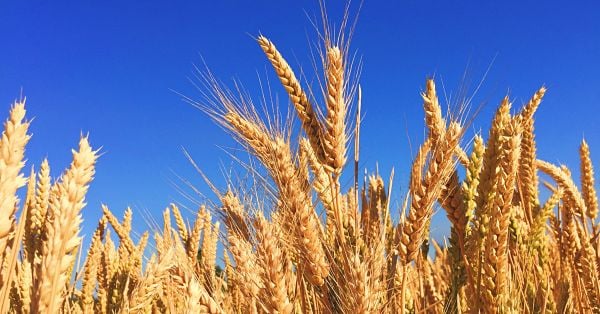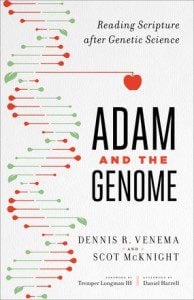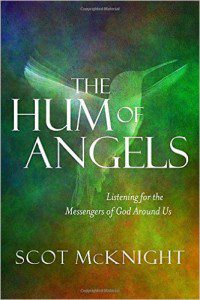 The 50 most affordable Christian colleges, including my alma mater (Cornerstone University) and my former place of teaching (North Park University).
The 50 most affordable Christian colleges, including my alma mater (Cornerstone University) and my former place of teaching (North Park University).
College affordability is an idea that is more helpful to quantify than simply considering the tuition of the institution of your choice. Many universities and colleges have developed very aggressive financial aid packages and have other unique sources of funding that reduce what may be very expensive tuition costs to a more manageable level for lots of students. With that in mind, we have put together a ranking of the 50 most affordable Christian colleges in the U.S. to help students navigate the true cost of attending these schools.
The colleges and universities on this list had to be accredited by the Transnational Association of Christian Colleges and Schools (TRACS) or a member/affiliate of the Council for Christian Colleges and Universities (CCCU). The average net price data we used to build this ranking was sourced from the latest data put out by the National Center for Education Statistics (NCES). Lastly, in order to ensure the comparisons were as commensurable and practical as possible, we set a lower limit on the student population at 1,000, which was also referenced through the NCES.
While we consider which Christian colleges fit our budget, the Christians of Iraq are ripped from their homes and stripped of possessions:
Human rights lawyer Nina Shea described the horror in Mosul to me: “(The Islamic State) took the Christians’ houses, took the cars they were driving to leave. They took all their money. One old woman had her life savings of $40,000, and she said, ‘Can I please have 100 dollars?’, and they said no. They took wedding rings off fingers, chopping off fingers if they couldn’t get the ring off.”
“We now have 5,000 destitute, homeless people with no future,” Shea said. “This is a crime against humanity.”
For the first time in 2,000 years, Mosul is devoid of Christians. “This is ancient Nineveh we are talking about,” Shea explained. “They took down all the crosses. They blew up the tomb of the prophet Jonah. An orthodox Cathedral has been turned into a mosque. … They are uprooting every vestige of Christianity.” University of Mosul professor Mahmoud Al ‘Asali, a Muslim, bravely spoke out against the Islamic State’s purging of Christians and was executed.
Conservation challenged by beavers and old growth trees:
Conservationists know beavers perform valuable ecological services, creating important habitat through their dams and tree clearing. They’re charismatic animals. Their recovery in the eastern United States is a stunning conservation success.
What happens when those thriving beavers threaten old-growth hemlock groves, one of the most imperiled habitats in the East?
That’s the situation at the Conservancy’s Woodbourne Forest Preserve in north-central Pennsylvania. It is forcing conservationists to choose between beavers and old-growth trees.
To some, this is a no-brainer for a wildlife sanctuary: leave it to beaver.
After all, haven’t beavers been shaping the forests for millennia? Isn’t it natural?
The reality is much more complicated. If people and beavers are to exist and thrive together, sometimes tough choices have to be made.
One of those places is Woodbourne.
Jim Stump, at BioLogos, on Belief in God in a World Explained by Science: Part one, Part two, Part three.
 Judaea Capta coin found at Bethsaida:
Judaea Capta coin found at Bethsaida:
The 2014 Bethsaida excavations in Israel have uncovered a rare Judaea Capta coin. In an email to Bible History Daily, University of Nebraska Omaha professor and excavation director Rami Arav revealed that the coin was issued by Herod’s great-grandson Agrippa II. Minted in 85 C.E. at Caesarea Maritima, the bronze coin depicts Roman Emperor Domitian on the obverse (front face of the coin) and a palm tree on the reverse (back face).*
Judaea Capta (“Judea captured”) coins were first struck under Roman Emperor Vespasian to celebrate the Romans’ suppression of the Jewish revolt (66–70 C.E.). The revolt was effectively quashed with the destruction of Jerusalem in 70 C.E., though thereafter the Roman army continued to stamp out the last of the rebels at such hideouts as Herod’s desert fortress at Masada.
Bosses who yell, threaten and micromanage their way to the top, often at the expense of miserable underlings are all too common in today’s workplaces.
But the Tony Sopranos and Darth Vaders of popular culture are not the most effective CEOs in the real world, according to a new study from the W.P. Carey School of Business at Arizona State University.
The best bosses are humble bosses, those who empower and appreciate their employees, are open to feedback and care about the greater good, according to the research published in Administrative Science Quarterly.
“Humility is not weakness,” Angelo Kinicki, a professor of W.P. Carey School of Business at Arizona State University, said Tuesday during a phone interview.
“Humility has its effects across levels of an organization in an empowered, uplifting way. You can’t browbeat people into performance.”
Josh Washington’s thorough and accurate study of the gospel:
From my readings I would say over this time and among these people what I’ve written is the consensus view on what the apostles handed down as the gospel. They all believed the gospel was a historical narrative of the words and deeds of Jesus. They all believed what they handed down became Holy Writ. They all regarded the gospels according to Matthew, Mark, Luke and John were the foundational documents for Christianity. The only people they seemed to disagree in part with on this were heretics, and even they basically agreed with them.
Generation Z, by Annie Kingston.
Fallon’s line may be a cliché, but it echoes a growing sentiment, as the spotlight is thrust on Generation Z, the unimaginative term for the cohort following Gen Y, orMillennials. While dispute rages over parameters, Gen Z are loosely defined as those born after 1995 and who are now 18 and under. It’s a big group: two billion worldwide, and one-quarter of the North American population.
Research, though still in beta, points to the emergence of a stellar generation: educated, industrious, collaborative and eager to build a better planet—the very qualities exemplified by Makosinski. In fact, in a manner typical of the need to neatly compartmentalize generations, Gen Z is already being branded as a welcome foil to the Millennials, born between 1980 and the mid- or late 1990s, who have been typecast as tolerant but also overconfident, narcissistic and entitled. Those characteristics weren’t an option for the first post-9/11 generation, one raised amid institutional and economic instability, informed by the looming shadow of depleting resources and global warming, and globally connected via social media.
Much of the current chatter surrounding Gen Z has been generated by the 56-slide presentation “Meet Generation Z: Forget everything you learned about Millennials,” produced by New York City advertising agency Sparks & Honey. It found that 60 per cent of Gen Zers want jobs that had a social impact, compared with 31 per cent of Gen Ys. It deemed them “entrepreneurial” (72 per cent want to start their own businesses), community-oriented (26 per cent already volunteer) and prudent (56 per cent said they were savers, not spenders). Gen Z is also seen to be more tolerant than Gen Y of racial, sexual and generational diversity, and less likely to subscribe to traditional gender roles.
The Heiltsuk live near the Koeye watershed—69 square miles (179 square kilometers) of temperate forest on the central British Columbia coast—and they thought about a dozen grizzlies lived in their midst. But a scientific study, led by the Heiltsuk and published in late June in the journal Ecology and Society, found that the Koeye actually hosts at least 57. That’s not your average bear density.
By comparison, Yellowstone National Park is about 3,472 square miles (8,992 square kilometers) and hosts only about 150 grizzly bears.
“It was a bit of a shock to me,” says William Housty, lead author of the study and director of Coastwatch, the research arm of the Heiltsuk First Nation.
Not that it’s surprising that grizzly bears are drawn to the area. The river that drains Koeye Lake has pink, chum, sockeye, and coho salmon, all tasty prey for bears. But neither Housty nor his colleagues expected to find nearly 60 grizzlies. (See: “Grizzly Bears Moving Into Canada’s Polar Bear Capital.”)
Mark Stricherz’s critical essay on Dinesh D’Souza, with this paragraph as the critical moment in the essay:
He has also struck a series of road bumps. In October 2012, D’Souza was forced to step down as president of Kings College in Manhattan after running afoul of the evangelical school’s sexual mores; he divorced his wife of two decades; and he pled guilty to using straw donors to aid the candidacy of Wendy Long, a friend who ran for the U.S. Senate in 2012. In the eyes of progressives, those sins and crimes made D’Souza a moral hypocrite and phony. In the eyes of critics, he trots out straw men rather than concrete arguments. But both were symptoms rather than causes of his change intellectually (and perhaps spiritually) from a generation ago. D’Souza has not so much broken bad as fallen victim to pride.
The Floe Edge, and beautiful collection of pictures:
The Floe Edge is a magical place. In simplest terms it is where the landfast ice meets the open ocean, and it is a magnet for wildlife, especially in the 24 hour light of the Arctic spring. I don’t get there every year, but I managed to spend one day there again this year. A scant 24 hours to take it in.
This June my brother-in-law and I took off to Kangiq (Cape Crauford), the western edge of of the mouth of Admiralty Inlet to Lancaster Sound. The famed NorthWest Passage, where explorers such as Franklin tried to find a passage that Inuit first traveled some 5000 years before. Traveling was relatively easy this spring, the ice mostly smooth, and the cracks small and easy to cross. Only one gave us trouble, partially hidden in the unusually deep snow pack this year, making it difficult to figure out the best place to cross safely. It was the last we had to cross and slowed down by some fog we arrived at the Floe Edge about an hour later.
EMAS: good idea!
In an average year, about ten pilots will accidentally run their airplanes right off the end of the runway while taking off or landing. These “overruns,” as the mishaps are called, often occur on slick runways or because of mechanical problems like failed brakes. In the past 30 years, overruns have caused at least 23 deaths and 300 injuries to passengers and crew at U.S. airports.
These errors are especially dangerous at airports closely surrounded by a city or natural hazards—like at San Francisco International Airport (SFO), where runways are bounded by the San Francisco Bay at one end and a busy highway at the other. That’s why this summer, SFO is installing an Engineered Material Arresting System (EMAS), or a bed of crushable cubes meant to collapse on impact to stop planes that may veer off course.
“These beds are similar in concept to a runaway truck ramp that you see on highways to slow down 18-wheelers,” says Jim Chiu, a project manager overseeing the installation at SFO. “We’re trying to do that here with aircrafts.”
A second major hole found in Siberia: explanation? Permafrost warming.
As much as I’d like to be doing a story about sandworms – or in this case, ice-worms– or definitive proof of the existence of frosty Hellmouths, the appearance of a second mysterious hole in the Yamal Peninsula of Siberia strengthens the much more mundane musings of scientists that the craters are the result of melting permafrost. While not as exciting as giant worms, UFOs or satanic sinkholes, this explanation may be just as terrifying.
Reindeer herders, members of the Nents who gave the area the name “end of the world,” found the second hole 18 miles from the first. Local lawmaker Mikhail Lapsui told the Moscow Times that it’s much smaller than the first and snow can be seen inside.
Why are scientists pointing to perma-unfrosting? For those in warmer climes,permafrost is defined as permanently frozen soil that has remained at or below 0°C for at least two years. The reason why the pictures we’ve been seeing of the areas around these Siberian holes don’t show ice or even snow is that the permafrost is below an active layer that freezes and thaws seasonally.











